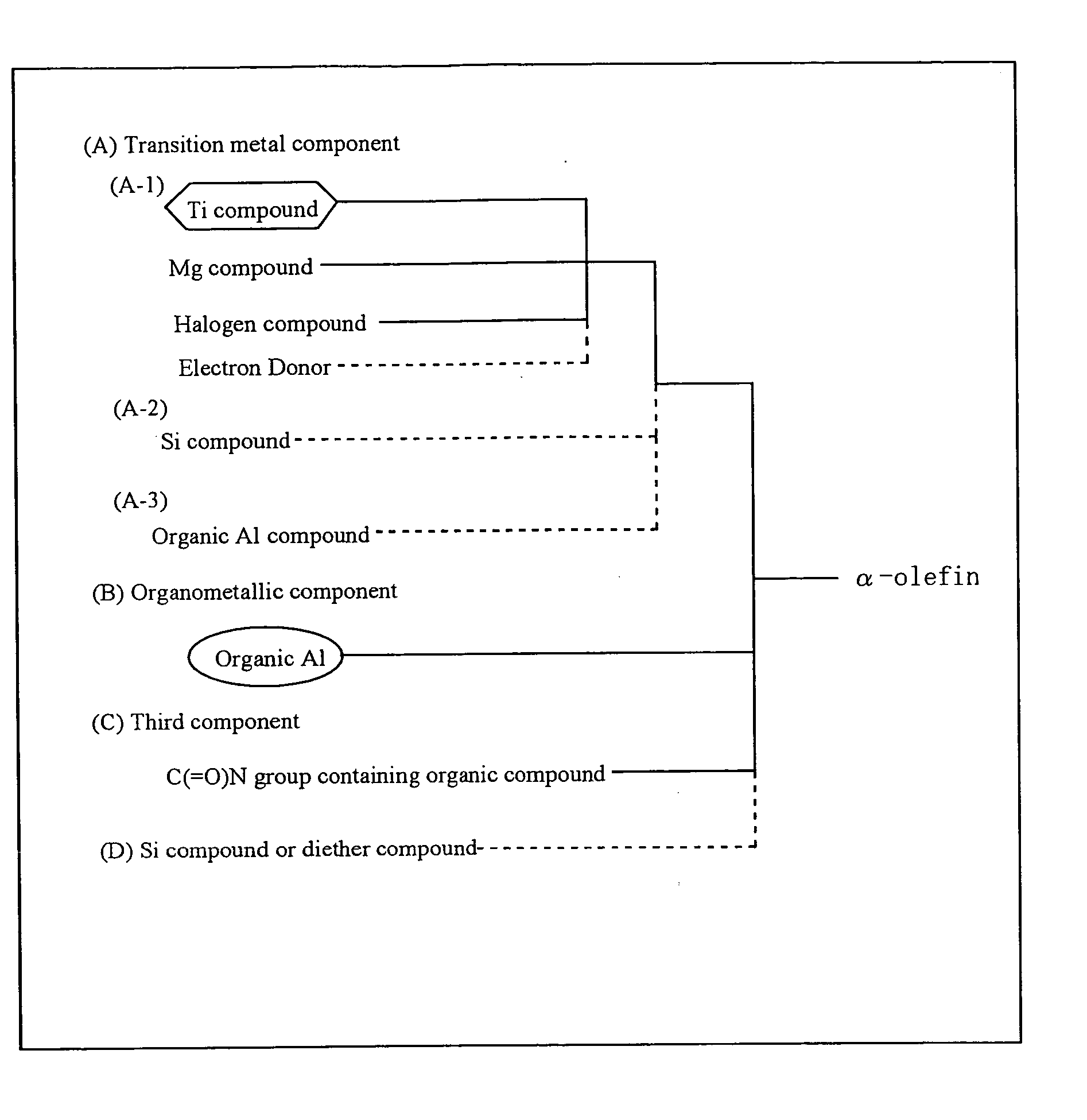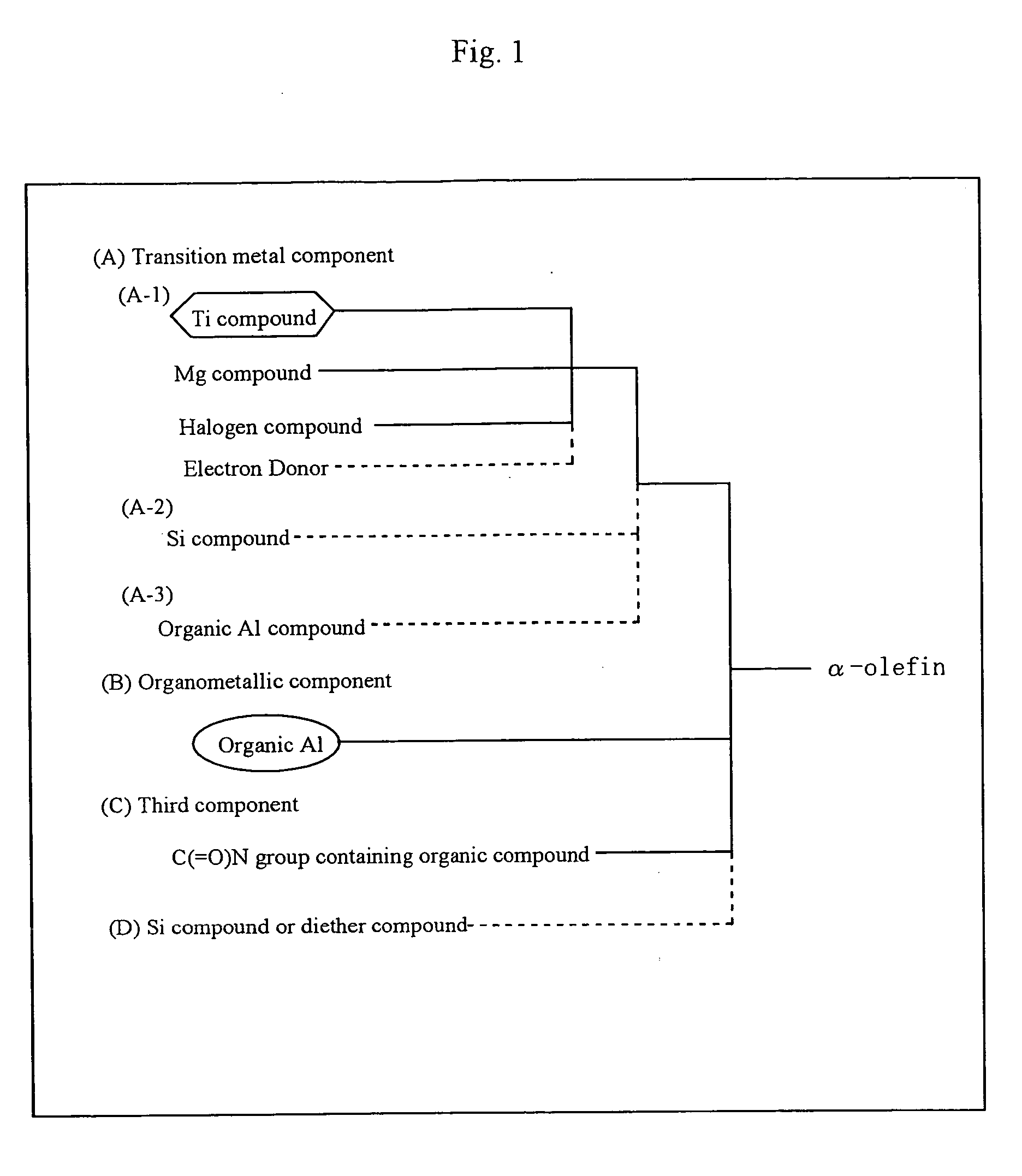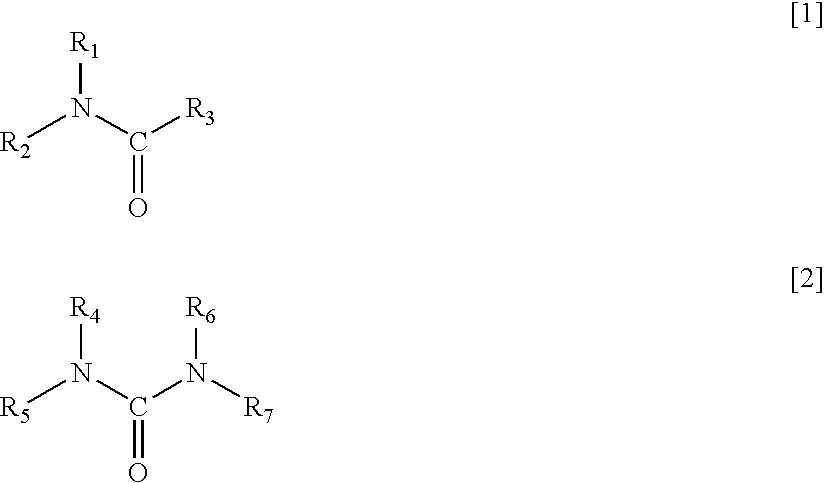Plymerization catalyst for a-olefins and process for production of alpha-olefin polymers therewith
a technology of a-olefin and alpha-olefin, which is applied in the direction of catalyst activation/preparation, physical/chemical process catalysts, chemical/physical processes, etc., can solve the problem of insufficient stereoregularity of a-olefin polymers, achieve low amorphous component density, improve stereoregularity, and high yield
- Summary
- Abstract
- Description
- Claims
- Application Information
AI Technical Summary
Benefits of technology
Problems solved by technology
Method used
Image
Examples
example
[0140] The present invention is described in further detail by way of examples; however, the present invention is not limited thereby.
[0141] The methods and apparatuses for measuring each of the physical properties are described below.
[0142] 1) MFR
[0143] Apparatus: Melt Indexer manufactured by Takara Thermistor Instruments Co., Ltd.
[0144] Method of measurement: Evaluation was made according to JIS-K6921, under conditions of 230° C. and 21.18 N.
[0145] 2) Polymer Bulk Density
[0146] The bulk density of the powder sample was measured by using an apparatus in accordance with ASTM D1895-69.
[0147] 3) Cold Xylene Solubility [CXS]
[0148] Method of measurement: CXS was obtained by the following procedure: the sample (about 5 g) is completely dissolved in xylene (300 ml) at 140° C., and then cooled to and set at 23° C. for 12 hours followed by filtration. The filtrate is evaporated and dried in vacuo at 110° C. for 2 hours. After cooling to the ambient temperature, the weight is measured...
example-1
[0155] [Production of Component (A)]
[0156] Two hundred milliliters of dried and deoxidized n-heptane was introduced in a flask sufficiently purged with nitrogen, and then, 0.4 mol of MgCl2 and 0.8 mol of Ti(O-n-C4H9)4 were introduced therein and reacted at 95° C. for 2 hours. On completion of the reaction, the reaction mixture was cooled to 40° C., and 48 milliliters of methyl hydrogenpolysiloxane (20 centistokes) was introduced and reacted for 3 hours. The solid component thus produced was rinsed with n-heptane.
[0157] Then, 50 milliliters of n-heptane purified in the same manner as above was introduced into a flask sufficiently purged with nitrogen, and the solid component synthesized above was measured off equivalent to 0.06 mol of Mg, and introduced into flask. Subsequently, 0.1 mol of SiCl4 was mixed with 25 milliliters of n-heptane, and the mixture was introduced into the flask at 30° C. in 30 minutes to carry out the reaction at 70° C. for 3 hours. Upon completion of the reac...
example-2
[0161] The same procedure as that in Example-1 was carried out except for using 55 milligrams of 1,3-dimethyl-2-imidazolidinone in the place of tetramethylurea of component (C). As a result, 205.8 (g) of polymer was obtained. The polymer yielded MFR of 23 (g / 10 min), polymer bulk density of 0.48 (g / cc), and CXS of 0.6 (wt %).
PUM
| Property | Measurement | Unit |
|---|---|---|
| Length | aaaaa | aaaaa |
| Mass | aaaaa | aaaaa |
| Mass | aaaaa | aaaaa |
Abstract
Description
Claims
Application Information
 Login to View More
Login to View More - R&D
- Intellectual Property
- Life Sciences
- Materials
- Tech Scout
- Unparalleled Data Quality
- Higher Quality Content
- 60% Fewer Hallucinations
Browse by: Latest US Patents, China's latest patents, Technical Efficacy Thesaurus, Application Domain, Technology Topic, Popular Technical Reports.
© 2025 PatSnap. All rights reserved.Legal|Privacy policy|Modern Slavery Act Transparency Statement|Sitemap|About US| Contact US: help@patsnap.com



